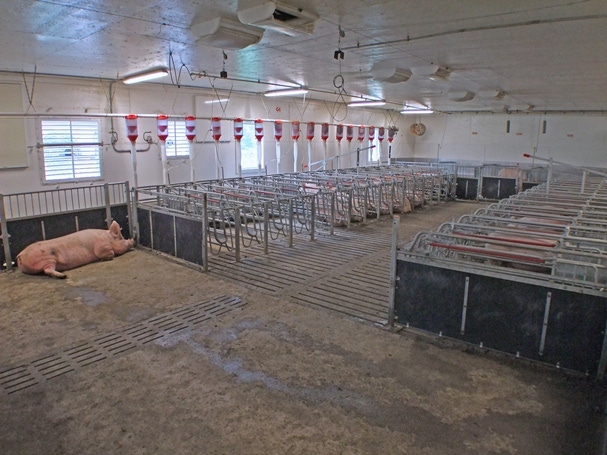January 17, 2014

For U.S. pork producers who remove gestation stalls, a number of choices exist to house pregnant sows, and producers must weigh the options that best fit their operations, says an Iowa State University Extension veterinarian.
Tyson Foods announced last week that it will encourage hog farmers to transition away from the use of gestation stalls, adding momentum to the cause of animal rights groups that argue the stalls are too cramped and don’t allow sows enough room to move. Earlier this month, Smithfield Foods also reaffirmed plans to end the use of gestation stalls in its facilities.
James McKean, DVM, professor of veterinary diagnostic and production animal medicine and associate director of the Iowa Pork Industry Center at Iowa State, says it’s likely only a matter of time before gestation stalls fall out of use among American pork producers.
“In the next 10 to 15 years, hog farmers will likely have to be making this decision,” McKean says. “Some will choose to do it earlier.”
The European Union banned the use of gestation stalls in 2013, and other countries are considering such a policy as well, he says.
Like what you’re reading? Subscribe to the National Hog Farmer Weekly Wrap Up newsletter and get the latest news delivered right to your inbox every week!
But implementing alternative housing practices for sows is a complex process that comes with a price tag attached. Switching to group housing – allowing multiple sows to share more spacious pens – requires producers to either retrofit existing facilities or build new ones, he says.
McKean says pork producers will have to choose between small group housing, where each pen holds between six and 15 sows, and large group housing, usually with more than 20 animals to a pen. Producers will then have to decide if the animals will be fed individually, as they would be in a gestation stall, or as a group, which can make it difficult to ensure each sow is fed a proper portion.
Deciding how pigs will be grouped together is another wrinkle that requires consideration, he says. Will the same pigs be housed together permanently, or will different pigs be added to the pen as time goes on? The wrong mix of sows can result in fighting and injury to the animals, McKean says.
“Each of these systems has basic rules associated with them,” McKean says. “You could write a book on the various possible permutations and basic concepts that go with each of them. But these are the choices that producers will have as they decide to move away from gestation stalls.”
Group housing systems make less efficient use of space than gestation stalls, McKean says. He estimates that a space used to house 100 sows in stalls would accommodate only about 60-70 sows under a group housing system. This will require producers either to make available additional space or reduce output, McKean says.
“Ultimately, the decision as to whether you use gestation stalls or other alternative facilities should be the producer’s decision,” he says. “But increasing pressures from retailers and activist groups may force changes through sales requirements or other contract arrangements.”
ISU Extension and Outreach swine program specialists and ISU faculty members traveled to Europe last fall to study alternative production systems and talk with European producers who have transitioned away from gestation stalls, McKean says. Extension field specialists will share the findings from the trip with any Iowa pork producers with questions on group housing systems, he says.
Read more sow housing stories:
Group Sow Housing: Practical Considerations
Management to Control Aggression in Group Housing
Defining Ideal Sow Body Condition
You May Also Like



